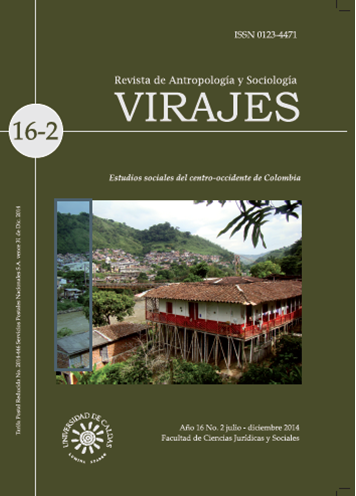Authors
Abstract
The Spanish Civil War analysis is a relevant topic in current histori aography because of its aftermath, its legacy which inspired immortal works and because it became a benchmarck for understanding the transition from dictatorship to democracy. The interpretation of this is divided into: the conflict years that correspond to the combat historiography and the interpretation that questions this historiography. A third reading or emergence of the scientific historiography, current reading, is concerned about cost recovery and the memory of the war and the dictatorship. Within this last reading it is important to reflect about the impact the Spanish Civil War had on the Peruvian social groups since it influenced in the social and political identity configuration between elites and vast Peruvian media and popular sectors. This can be done through an updated and abundant bibliography. Spain as a reference and Hspanism as an ideology are cohesion vectors in a multiethnic and catholic Peruvian society. What happened with the war is not indifferent between the Peruvian social groups which explain that Lima newspapers disseminated and commented it rutinarily in such a way that these groups were able to set their location and destiny, providing their class with a specific content for which they emphasized the similarities between the Peruvian and the Spanish situation, ideologically manipulating the real and potential consequences of the war outcome, combining realities and ghosts in the assertion of the right-wing ideology.
References
______________. (1939). El general Bebevidas. Monstruo de América. (Lágrimas y sangre del calvario de un pueblo). Lima: Editorial Llamarada.
CASANOVA, Julián. (2009). República y Guerra Civil. Barcelona: Crítica/Marcial Pons.
CHAVARRÍA, Jesús. (1979). José Carlos Mariátegui and the Rise of Modern Peru, 1890-1930. Albuquerque: University of New México Press.
FALCOFF, Mark, PIKE, Fredrick. (1982). The Spanish Civil War, 1936-1939. American Hemispheric Perspectives. Lincoln: University of Nebraska Press.
BAUMANN, Gerold. (1979). Extranjeros en la Guerra Civil Española: Los Peruanos. Lima: Libreria Estudium.
HUGH, Thomas. (1977). The Spanish Civil War. New York: Princeton University Press.
JACKSON, Gabriel. (1965). The Spanish Republic and the Civil War, 1931-1939. New York: Princeton University Press.
LAMBIE, George. (1993). El pensamiento político de César Vallejo y la Guerra Civil Española. Lima: Editorial Milla Batres.
LÓPEZ, José Ignacio. (1981). El pensamiento fascista (1930-1945). Lima: Francisco Campodónico/Mosca Azul.
MARTÍNEZ RIAZA, Ascensión. (2004). Por la República. La apuesta política y cultural del peruano César Falcón en España, 1919-1939. Lima: IEP.
_______________. (2006). “A pesar del gobierno”. Españoles en el Perú, 1879-1939. Madrid: CSIC.
MOLINARI, Tirso. (2006). El fascismo en el Perú. La Unión Revolucionaria, 1931-1936. Lima: UNMSM.
_______________. (2012). Dictadura, cultura autoritaria y conflicto político en el Perú, 1936-1939. Tesis de grado para optar al título de Doctor, inédita, UNMSM. Lima, Perú.
MUÑOZ, Olga. (2013). “La voz de los intelectuales”. En: Perú y la guerra civil española.Madrid: Calambur.
PINTO, Willy. (1983). Sobre fascismo y literatura. Lima: Cibeles.
STEIN, Steve. (1980). Populism in Peru. The Emergence of the Masses and the Politics of Social Control. Madison: The University of Wisconsin Press.

 PDF (Español)
PDF (Español)
 FLIP
FLIP














